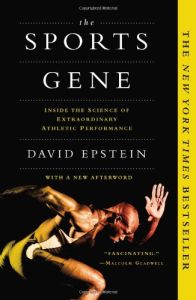Join getAbstract to access the summary!

Join getAbstract to access the summary!
David J. Epstein
The Sports Gene
Inside the Science of Extraordinary Athletic Performance
Current, 2014
What's inside?
Are great athletes born or made? Both.
Recommendation
Can Malcolm Gladwell’s famed “10,000-hour rule” – which defines the length of time a person needs to master a skill – explain Donald Thomas? He’s the world champion Bahamian high jumper who triumphed despite his lack of experience, his indifference to training and his rough technique. As sports journalist David Epstein writes in this fascinating study, athletic success turns out to be a complex stew of genetic and cultural factors. That’s why Thomas, an unknown, could defeat an Olympic champion who devoted his life to perfecting his high jump technique. Epstein, an informed, engaging guide to sports science, argues convincingly that the 10,000-hour rule is a vague guideline, not a road map. He doesn’t shy away from uncomfortable discussions of race in sports; he addresses this touchy topic and others in a tactful, respectful way. A writer at Sports Illustrated, Epstein clearly conveys complex technical concepts, and he offers a view of performance and training, which managers in other fields may find illuminating. getAbstract recommends his study to supervisors, coaches and parents seeking insight into athletic success.
Summary
About the Author
David Epstein is an award-winning writer at Sports Illustrated. He ran on Columbia University’s track team.






















Comment on this summary